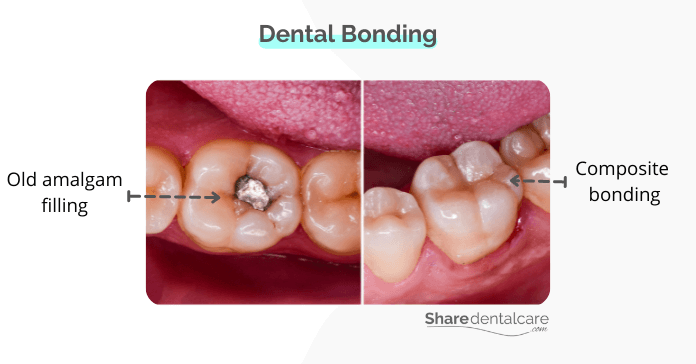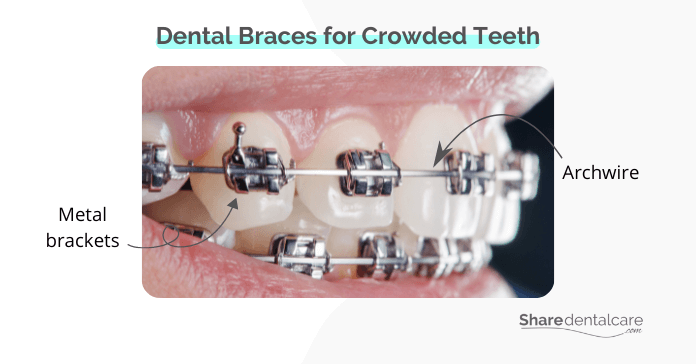Teeth crowding is a common problem that can cause problems with your bite and make it difficult to properly clean your teeth and gums. Also, crowding causes aesthetic problems, making it hard to smile confidently. Dental bonding is a cosmetic procedure that can make your teeth look more aligned and aesthetically pleasing. However, this procedure has limitations and is not suitable for everyone, as it cannot address underlying structural issues that cause crowding. Orthodontic treatment is the best option for correcting crowded teeth in most cases. In this blog post, we will discuss what dental bonding is and how it differs from other options for crowded teeth.
What is Dental Bonding?
Dental bonding involves a process where tooth-colored resin material (composite) is applied to the surface of a tooth. The dentist roughens the tooth surface and applies a liquid (dental bonding agent) to help the composite material adhere to the tooth structure. Then, the composite material is sculpted and hardened with a special curing light. Composite bonding can improve the appearance, shape, and size of teeth.
Bonding is used to close gaps between teeth, repair chipped or cracked teeth, cover up discolored areas on the tooth, and even change the shape or size of teeth. The bonding material can also be used to fill cavities in decayed teeth, providing a more aesthetically pleasing look than silver fillings (amalgam). In some cases, dental bonding can be used to improve the appearance of crowded teeth.
Advantages of dental bonding include:
- It can usually be done in one dental visit
- The results are immediate
- Bonding material has a lifespan of 5 to 10 years, depending on the type of material used
- It is less expensive than other treatment options, such as braces or veneers

Can Dental Bonding Be Used to Correct Crowded Teeth?
Dental bonding is used only as a cosmetic solution for crowded teeth, as it does not correct the underlying structural issues causing the crowding. Besides, it is only suitable for selective cases where the teeth are slightly crowded. If there is moderate to severe crowding, then orthodontic treatment such as braces and clear aligners would be more suitable.
Generally, dental bonding is not the best treatment option for crowded teeth because of its limited lifespan and the fact that it does not correct underlying structural issues. Also, dental bonding has drawbacks, including:
- Dental Bonding is not suitable for moderate to severe crowding
- It is only a cosmetic solution and doesn’t correct the underlying structural issues
- Bonding material can discolor over time, requiring further treatment
- The bonding material may chip or wear away over time, requiring further treatment
- The results are not as long-lasting as other treatments such as braces or clear aligners
Alternatives to Dental Bonding for Crowded Teeth
In most cases, orthodontic treatment such as braces and clear aligners is the best and most reliable solution for crowded teeth. Orthodontic treatment corrects the underlying structural issues that cause crowding and can provide long-lasting results. Treatment options for crowded teeth include:
- Braces are a traditional orthodontic treatment that uses metal brackets and wires to gradually shift teeth into the correct alignment. Braces for overcrowding are the most common treatment for mild, moderate, and severe teeth crowding.
- Clear aligners, such as Invisalign, use a series of clear plastic trays to shift teeth into the correct alignment gradually. Invisalign for overcrowded teeth is a more discreet option than braces and can be removed when eating or brushing your teeth. Clear aligners are recommended for mild to moderate crowding.
- Veneers are a cosmetic treatment that involves the placement of thin, tooth-colored shells on the front surface of teeth to improve their shape and appearance. Veneers can be made from porcelain or tooth-colored material. They are recommended only for mild crowding because they cover up the crowding but do not correct the underlying structural issues. Porcelain veneers are more durable and long-lasting than dental bonding and require multiple visits to the dentist

Dental Bonding for Crowded teeth – Conclusion
Dental bonding can be used for minor cases of crowded teeth, providing a quick and cost-effective solution. However, it is not recommended for moderate to severe crowding as it does not correct the underlying structural issues. Dental bonding is not the best treatment option for crowded teeth because it can chip, wear away, and discolor over time. Also, the results are not as long-lasting as other treatments such as braces or clear aligners.
Orthodontic treatments such as braces and clear aligners are the best and most reliable solutions for crowded teeth, providing long-lasting results. Veneers can also be used to improve the appearance of slightly crowded teeth, but they are not suitable for correcting structural issues. It is important to consult with an orthodontist to determine the best course of treatment for teeth crowding. Your dentist will be able to assess your specific needs and recommend the most suitable treatment option for you.